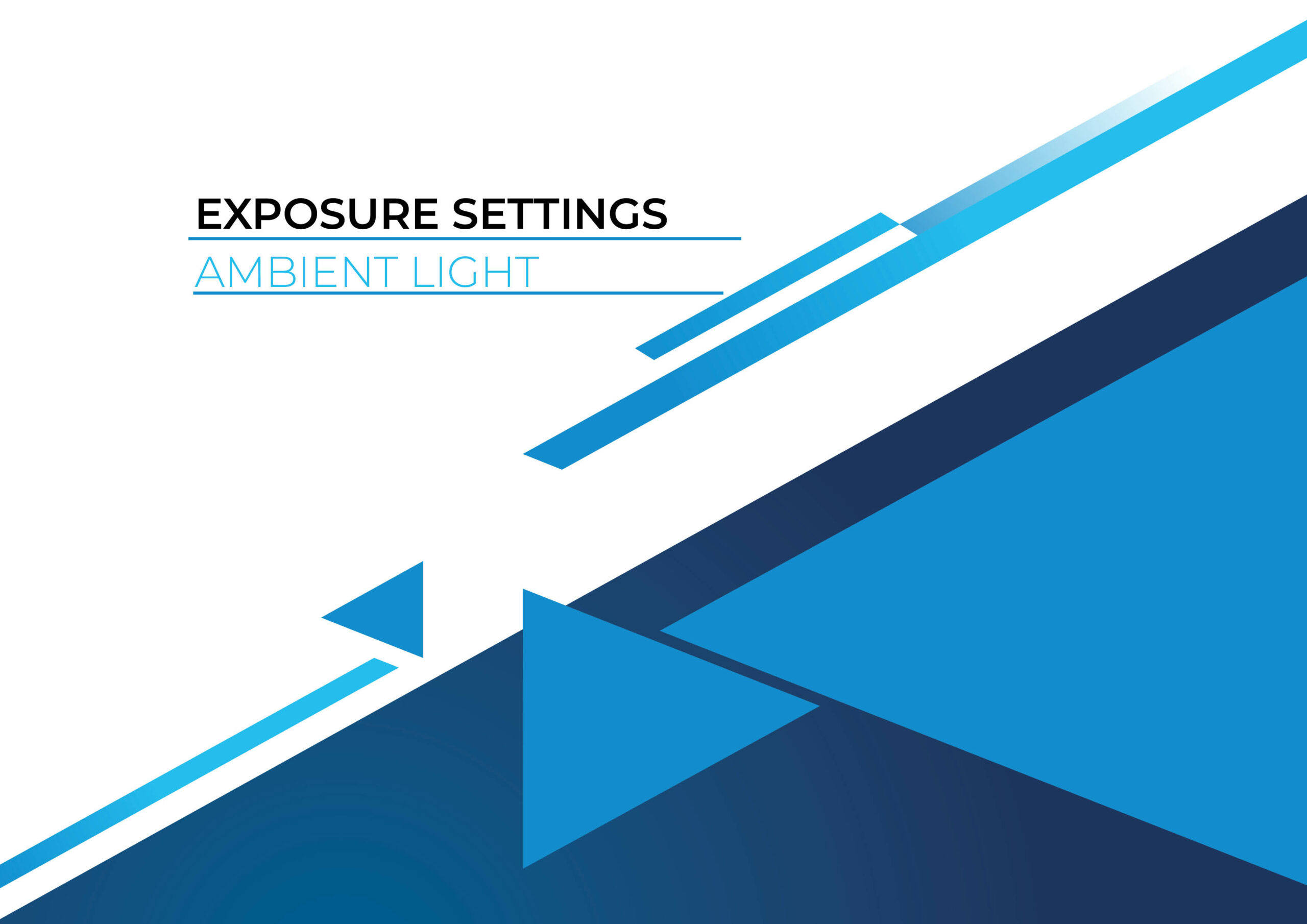Content Strategy

R1.9 Exposing for Ambient Light
Overview
This section enables students to understand the significance of properly exposing for ambient light in photography, with a focus on wedding scenarios. It emphasizes the use of appropriate camera settings, techniques, and equipment, such as optical stabilization, wide aperture lenses, and advanced camera bodies, to capture high-quality images in varying lighting conditions. Students also learn strategies for specific landscape challenges including dark, bright, mixed light, and backlit scenes, with techniques ranging from exposure bracketing to the use of neutral density filters and lens hoods.
By The End of This Lesson Students Will Be Able To
- Understand the importance of exposing for ambient light in wedding photography to achieve natural, balanced images, and preserve the scene’s atmosphere and mood.
- Assess ambient light in a scene prior to introducing artificial light, maintaining a sense of realism and avoiding overly lit images.
- Utilize lenses with optical stabilization or camera bodies with in-body stabilization for capturing sharp images in fast-paced, low-light situations, such as dimly lit wedding halls.
- Use wide aperture lenses (e.g., f/1.4 aperture) in low-light situations, which allow more light to enter the camera, help achieve proper exposure, and create beautiful background bokeh.
- Understand the benefit of using advanced camera bodies that allow for higher ISO settings without significant reduction in image quality.
- Comprehend the need to prioritize ambient light exposure and utilize the appropriate equipment for capturing stunning images in challenging lighting conditions.
- Properly expose dark scenes by using slower shutter speeds, wider apertures, higher ISOs, tripods, long exposure techniques, or bracketing exposures.
- Expose bright scenes properly by using faster shutter speeds, narrower apertures, lower ISOs, and graduated neutral density filters to balance the exposure between the sky and the land.
- Handle scenes with both dark and bright areas by using exposure bracketing and blending the resulting images in post-processing, or by using a graduated neutral density filter.
- Expose backlit scenes properly by managing the strong backlight using fill flash, a reflector, exposure bracketing, a lens hood, or a hand to shield the lens and prevent lens flare.
Course Content
Camera Settings: Exposing for Ambient Light
Exposing for ambient light is a crucial aspect of photography, especially in wedding photography, as it sets the foundation for achieving natural and balanced images. Properly capturing ambient light ensures that the scene’s atmosphere and mood are preserved, while still allowing for the addition of artificial light to enhance the subject, if necessary.
Before introducing artificial light, wedding photographers should first assess the ambient light in the scene. This assessment allows them to maintain a sense of realism and avoid images that appear overly lit or artificial. By exposing for ambient light, photographers can ensure that the background and environment are properly exposed, providing context and depth to the final image.
In dimly lit wedding halls, capturing ambient light can be more challenging. The use of lenses with optical stabilization or camera bodies with in-body stabilization provides wedding photographers with an added advantage in fast-paced, low-light situations. These stabilization features minimize the impact of camera shake, allowing photographers to capture sharp images even at slower shutter speeds. By reducing the risk of human error-induced blur, stabilization systems enable photographers to focus more on capturing the perfect moment, rather than struggling to maintain a steady hand in the midst of a bustling wedding environment. This flexibility is particularly valuable during dimly lit ceremonies or receptions, where slower shutter speeds may be necessary to achieve proper exposure. In combination with other techniques and equipment, optical and in-body stabilization systems further empower wedding photographers to create stunning, high-quality images that truly capture the essence of the event, regardless of the lighting conditions or pace of the day. Additionally, they can experiment with different camera angles and positions to capture light from available sources such as windows, chandeliers, or decorative lighting.
In low-light situations, wedding photographers benefit from using wide aperture lenses, such as those with an f/1.4 aperture, as these lenses allow for more light to enter the camera, making it easier to achieve proper exposure. Wide aperture lenses also create a shallow depth of field, which can produce beautiful background bokeh and help the subject stand out against the dimly lit environment.
Another consideration for wedding photographers working in low-light conditions is the use of newer camera bodies that allow for higher ISO settings without a significant reduction in image quality. These advanced camera models have improved noise reduction capabilities, enabling photographers to increase ISO values and maintain proper exposure without introducing excessive noise or grain into the final image.
By prioritizing ambient light exposure and utilizing the appropriate equipment, wedding photographers can capture stunning images that convey the mood and atmosphere of the event, even in challenging lighting conditions.
Here’s a breakdown of how to expose properly for various landscape challenges:
- Dark scene: In a dark scene, the main challenge is to capture enough light without introducing noise or camera shake. To achieve proper exposure, you can use a slower shutter speed, a wider aperture, and a higher ISO. Using a tripod can help avoid camera shake when using slower shutter speeds. In extreme low-light situations, consider using long exposure techniques or bracketing exposures to create a final image with a broader dynamic range.
- Bright scene: In a bright scene, the challenge is to avoid overexposing the highlights while maintaining details in the shadows. To achieve proper exposure, use a faster shutter speed, a narrower aperture, and a lower ISO. Utilize your camera’s histogram and highlight warning features to ensure highlights are not clipped. You can also use graduated neutral density filters to balance the exposure between the sky and the land, preserving details in both areas.
- Dark and bright scene in one: When a scene includes both dark and bright areas, you need to capture details in both highlights and shadows, which can be challenging due to the limited dynamic range of most cameras. To achieve proper exposure in this situation, consider using exposure bracketing and then blending the resulting images in post-processing. Alternatively, you can use a graduated neutral density filter to balance the exposure between the bright and dark areas.
- Backlit scene: In a backlit scene, the main challenge is to expose properly for the subject while managing the strong backlight. To achieve proper exposure, you can either expose for the subject and let the background become overexposed or use fill flash or a reflector to illuminate the subject. Another option is to use exposure bracketing and then blend the images in post-processing to achieve a balanced exposure. When shooting directly into the sun, consider using a lens hood or a hand to shield the lens and prevent lens flare.
Cognitive Engagement Questions
Assignment 1: Exposing for Ambient Light in Various Scenes (Assignment #CAM-015)
Objective: Understand and apply the principle of exposing for ambient light in various scenes, including dark, bright, mixed, and backlit.
Task: Students should capture a series of photos in various lighting situations (dark, bright, mixed light, and backlit) while exposing for the ambient light in the scene. They should submit these photos along with a brief description of the settings they used and their thought process for each shot.
Email Subject: Assignment #CAM-015: Exposing for Ambient Light in Various Scenes
Assignment 2: Using Stabilization and Wide Aperture Lenses in Low-Light Situations (Assignment #CAM-016)
Objective: Understand the advantages of using lenses with optical stabilization and wide apertures in low-light conditions.
Task: Students should take a series of photos in low-light conditions using a lens with optical stabilization (or a camera with in-body stabilization) and a wide aperture lens. They should analyze how the different equipment affected the sharpness and exposure of the photos.
Email Subject: Assignment #CAM-016: Using Stabilization and Wide Aperture Lenses in Low-Light Situations
Assignment 3: Experimenting with Advanced Camera Bodies (Assignment #CAM-017)
Objective: Understand the benefit of using advanced camera bodies that allow for higher ISO settings without significant reduction in image quality.
Task: Students should experiment with higher ISO settings on their camera bodies (if they have access to advanced models) in various lighting conditions. They should observe and discuss how increasing the ISO affected the image noise and overall quality of the photos.
Email Subject: Assignment #CAM-017: Experimenting with Advanced Camera Bodies
© 2023 Karimah Clinton Academy. All rights reserved.
